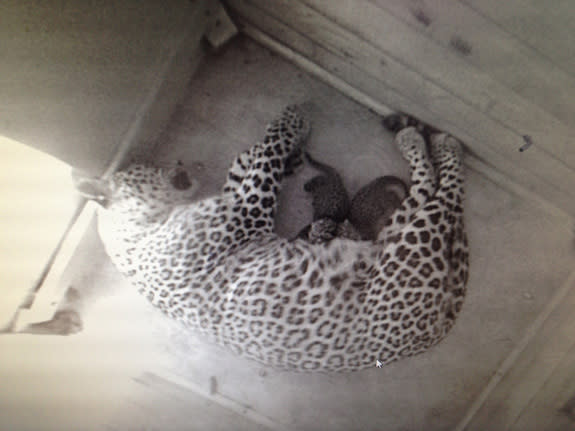Two Rare Persian Leopard Cubs Born in Russia

Two Persian leopard cubs were born in a Russian national park last week for the first time in 50 years, according to a statement from the World Wildlife Fund. The species is endangered.
The Persian leopard is one of the largest leopard subspecies, and the beasts once heavily roamed southwest Russia's Caucasus Mountains and the surrounding region along the southern Caspian Sea.
But heavy poaching and habitat loss in the 20th century landed the animal on the International Union for the Conservation of Nature's endangered species list, with only about 1,290 adults now believed to be alive in the wild.
The two newborns were bred at the Persian Leopard Breeding Rehabilitation Center in Sochi National Park, in an effort to help reintroduce the population to the wild. The cubs' parents joined the center in 2012 from Portugal's Lisbon Zoo.
The youngsters are about 6 inches long (15 centimeters), and probably weigh only about 1.5 pounds (700 grams), though the center staff has not yet handled the animals to avoid disturbing them, the head of the breeding center said in a statement.
Leopard cubs typically remain in their den for about two months, feeding on partially digested meat from their mother at first, and eventually developing their own hunting skills.
Those involved in the rehabilitation effort hope this birth could provide a small step forward for the species.
"They will be released into the wild after learning surviving skills, and will start a new population of leopards in the Caucasus Mountains," Natalia Dronova, the World Wildlife Fund's Russian species coordinator, said in a statement.
Follow Laura Poppick on Twitter. Follow LiveScience on Twitter, Facebook and Google+. Original article on LiveScience.
Copyright 2013 LiveScience, a TechMediaNetwork company. All rights reserved. This material may not be published, broadcast, rewritten or redistributed.

